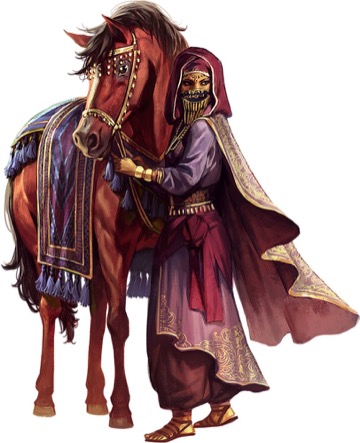| Feros |
| 3 people marked this as a favorite. |
Pathfinder Maps, Pathfinder Accessories, Starfinder Society Subscriber; Pathfinder Roleplaying Game Superscriber

I'm halfway through reading the book and so far I am highly impressed. You did an amazing job, Jessica! You should be very proud! :D
And keep up the extra bits of Kelish! Language is a wonderful way of filling out a setting, especially if the names of places and people sound like they come from a common source. Bravo!
| Feros |
| 1 person marked this as a favorite. |
Pathfinder Maps, Pathfinder Accessories, Starfinder Society Subscriber; Pathfinder Roleplaying Game Superscriber

Berselius wrote:
Does the manual say what the Keleshites think of the other races of Golarion?
Yes! It covers some of the differences in opinions between Qadiran Keleshites, non-Qadiran Kelesh, and Avistani Kelesh as well.
 Junayd Ibn Sabbah
Junayd Ibn Sabbah
|
| 2 people marked this as a favorite. |
Berselius wrote:
Does the manual say what the Keleshites think of the other races of Golarion?
My brothers of Qadira and I think camels deserve greater respect than any filthy Taldan!
Quote:
Qadirans tend to think of themselves as Qadiran first, Keleshite second, and whatever other ethnic identity they may claim third.
This is why it hurt to lose the Qadiran PFS faction. :(
| Garrett Guillotte |
| 1 person marked this as a favorite. |
Kajehase wrote:
Seems the picture link isn't going anywhere.
There's a typo in the URL. This link works.





